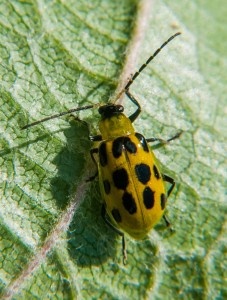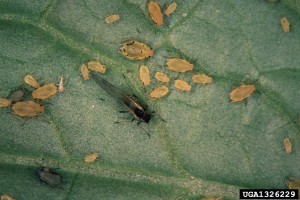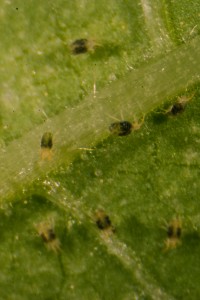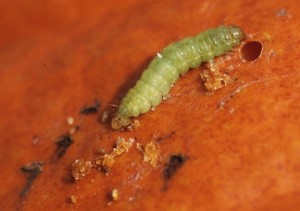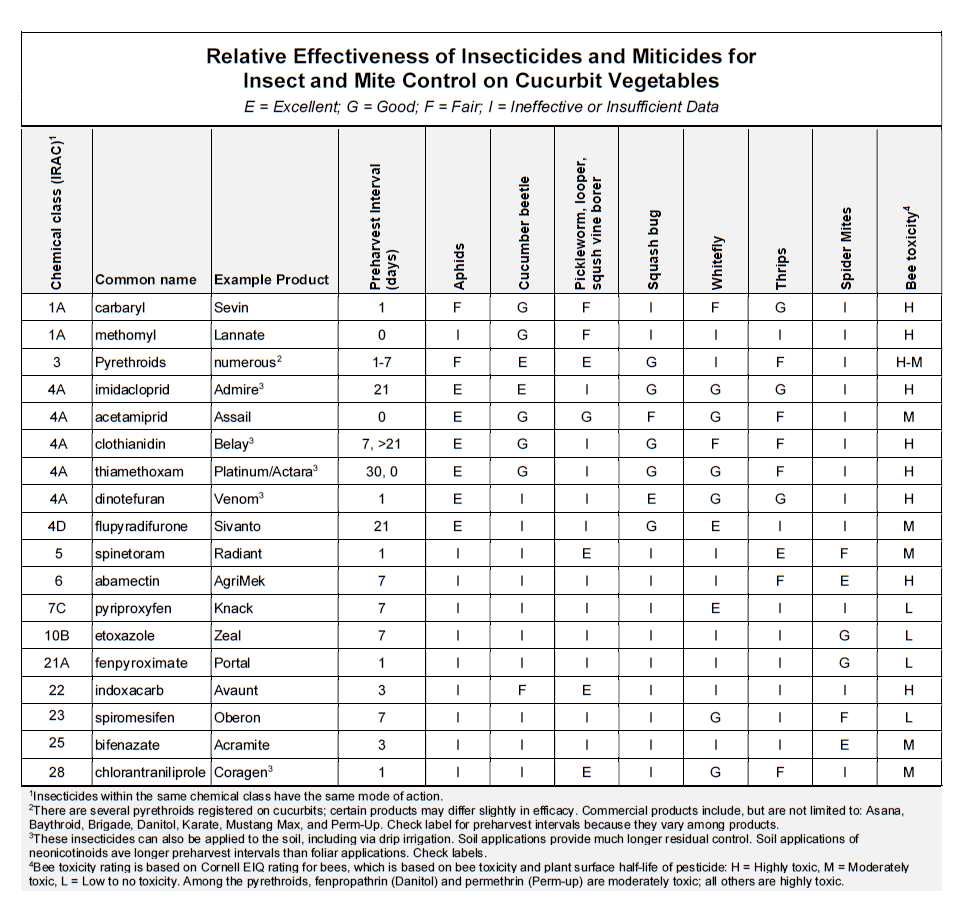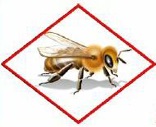Insect Management on Cucurbit Vegetables in North Carolina
go.ncsu.edu/readext?353946
en Español / em Português
El inglés es el idioma de control de esta página. En la medida en que haya algún conflicto entre la traducción al inglés y la traducción, el inglés prevalece.
Al hacer clic en el enlace de traducción se activa un servicio de traducción gratuito para convertir la página al español. Al igual que con cualquier traducción por Internet, la conversión no es sensible al contexto y puede que no traduzca el texto en su significado original. NC State Extension no garantiza la exactitud del texto traducido. Por favor, tenga en cuenta que algunas aplicaciones y/o servicios pueden no funcionar como se espera cuando se traducen.
Português
Inglês é o idioma de controle desta página. Na medida que haja algum conflito entre o texto original em Inglês e a tradução, o Inglês prevalece.
Ao clicar no link de tradução, um serviço gratuito de tradução será ativado para converter a página para o Português. Como em qualquer tradução pela internet, a conversão não é sensivel ao contexto e pode não ocorrer a tradução para o significado orginal. O serviço de Extensão da Carolina do Norte (NC State Extension) não garante a exatidão do texto traduzido. Por favor, observe que algumas funções ou serviços podem não funcionar como esperado após a tradução.
English
English is the controlling language of this page. To the extent there is any conflict between the English text and the translation, English controls.
Clicking on the translation link activates a free translation service to convert the page to Spanish. As with any Internet translation, the conversion is not context-sensitive and may not translate the text to its original meaning. NC State Extension does not guarantee the accuracy of the translated text. Please note that some applications and/or services may not function as expected when translated.
Collapse ▲(Cucumber, Squash, Pumpkin, Watermelon)
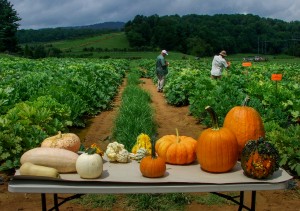 Contents
Contents
- Focus of Insect Management
- Pest Complex
- Control Options
- Protection of Pollinators
- Additional Resources
Focus of Insect Management Program
Because of the ubiquitous nature of cucumber beetles and the high potential for damage, the focus should be on managing these insects. Aphids and spider mites do not always develop to damaging levels, so the use of insecticides for control of these pests should be on an as-needed basis. Finally, pickleworm can be a serious pest late in the season, usually after mid-August. Pickleworm control is rarely required before this time.
Pest Complex
With the exception of the squash bug, squash vine borer, and spider mites, the complex of arthropod pests that attack cucurbit crops is similar on all crops. The three former pests are more specific regarding the crops they attack. Below is a list of common (C) and sporadic (S) pests that attack various cucurbit crops.
| Pest | Cucumber | Squash, Pumpkin | Watermelon |
| Aphids | C | C | C |
| Cucumber beetles | C | C | C |
| Pickleworm | C | C | C |
| Squash bug | – (1) | C | – (1) |
| Spider mites | C | S | C |
| Squash vine borer | – (1) | S (2) | – (1) |
| Seedcorn maggot | S | S | S |
| Cutworm, Armyworm, Loopers | S | S | S |
| Leafminer | S | S | S |
| Thrips | S | S | S |
| Whiteflies | S | S | S |
| (1) While cucumber and watermelon are sometimes reported as hosts of squash bug and squash vine borer, these insects are rarely found on these crops. Squash is a primary host of both. | |||
| (2) Squash vine borer is a common pest in gardens or small plantings of squash and pumpkin, but it is encountered less frequently in commercial plantings. | |||
CUCUMBER BEETLES: The spotted and striped cucumber beetle are both serious pests of cucumber. They are the most common insect pests and can potentially cause damage from the time of emergence through harvest. They also vector bacterial wilt, which can cause premature death of plants. Adult cucumber beetles will also feed on ripe fruit, causing a scarring that renders the fruit unmarketable.
APHIDS: Aphids (including melon aphid and green peach aphid) can build to large densities, and damage is usually the result of aphid honeydew accumulating on fruit. Aphids can also vector several different viruses, although most modern cucurbit varieties are resistant to common viruses. Insecticidal control of aphids will not control the spread of virus; instead the use of stylet oil sprays and reflective mulches can delay virus spread.
SPIDER MITES: Twospotted spider mites can build to high densities on cucumbers, most commonly in July or August. High mite populations are often associated with the use of pyrethroids.
PICKLEWORMS: The pickleworm is a common late-season pest of cucurbits in NC. Control is rarely required before August, but damage is common if this insect is ignored during August and September.
Control Options
Insect control can be achieved with insecticides applied via foliar application, or, on crops grown with drip irrigation, via chemigation. The use of drip chemigation (application of pesticides through the drip irrigation system) can control most cucumber pests, including cucumber beetles, aphids, and pickleworm (and other lepidopteran pests). Application of these chemicals in the drip line results in long residual control – often for months. One shortcoming of chemigation is that it will not prevent adult cucumber beetles from feeding on and scarring mature fruit. Hence, chemigation should be supplemented with foliar sprays of insecticides if fruit scarring occurs. Get more information at Benefits of Applying Insecticides with Drip Chemigation.
If not using chemigation, foliar insecticide applications should be made at 10- to 14-day intervals beginning at the first true leaf stage, and at weekly intervals after early August for pickleworm control. A diversity of neonicotinoid and pyrethroid insecticides provides excellent control of cucumber beetles. Pickleworm control is achieved with pyrethroids, Coragen, Belt, Avaunt, and Radiant. Excessive use of pyrethroids can lead to flare-ups of spider mites and aphids.
Protection of Pollinators
Cucurbit crops are highly dependent on bees (both honey bees and native wild bees) for pollination, and thus their flowers are attractive to many species of bees. Most insecticides recommended for insect control on cucurbits are toxic to bees, so precautions should be taken to minimize exposure. The most effective approach is to apply insecticides in the evening when bees are not flying. Spray when drift is minimal to avoid contamination of nearby bee habitats, maintain good weed control to minimize flowering broadleaf weeds in the field, and avoid having standing puddles of pesticide-contaminated water. Read precautions highlighted by the bee icon hazard symbol on labels:
Additional Resources
- Vegetable Pest Management
- Benefits of Applying Insecticides with Drip Chemigation
- Biological Control with Predators and Parasitoids
- Walgenbach Entomology Lab
- Southeastern US Vegetable Crop Handbook
- North Carolina Agricultural Chemicals Manual
Image credits: Pumpkin field, cucumber beetle, spider mites: Steve Schoof, NC State University; aphids: Whitney Cranshaw, Colorado State University, Bugwood.org; pickleworm: Gerald Holmes, California Polytechnic State University at San Luis Obispo, Bugwood.org



